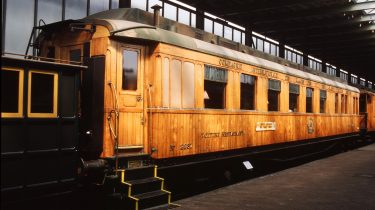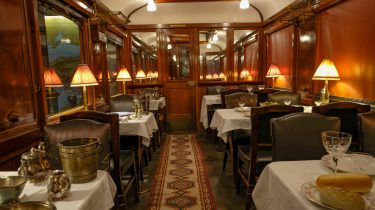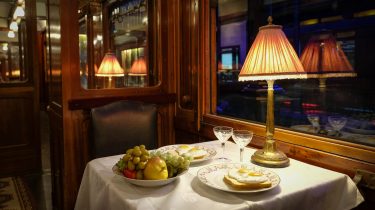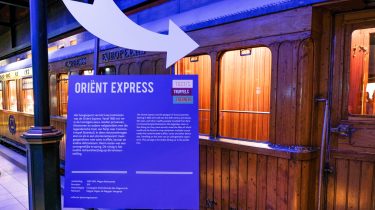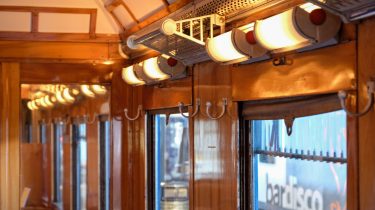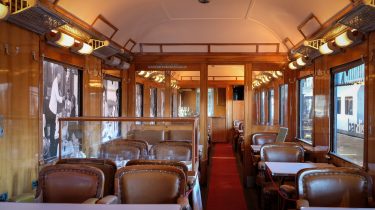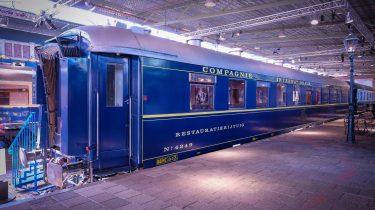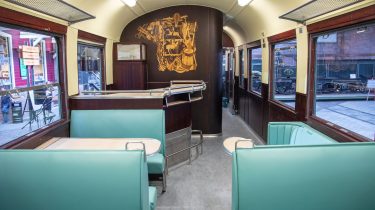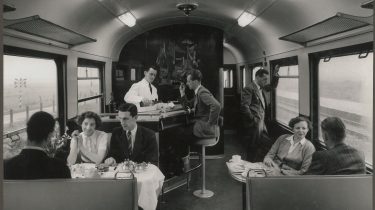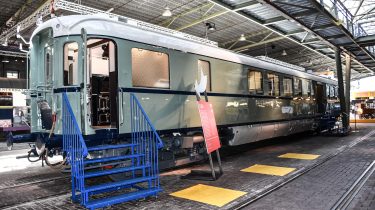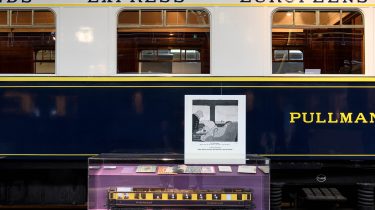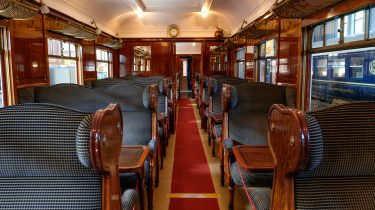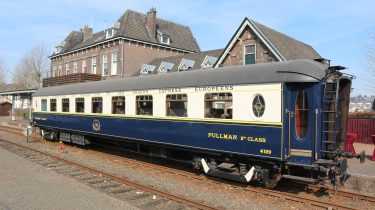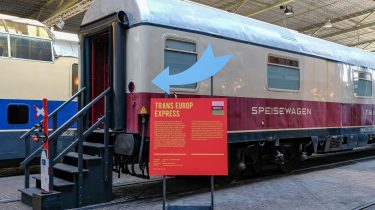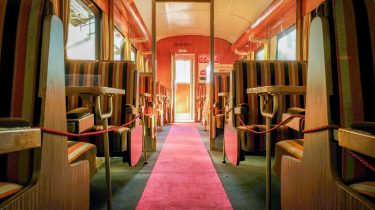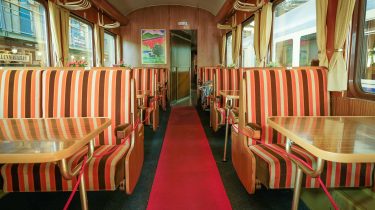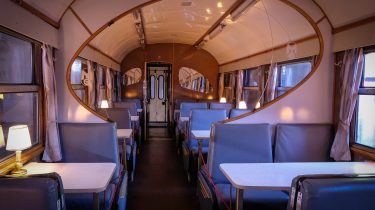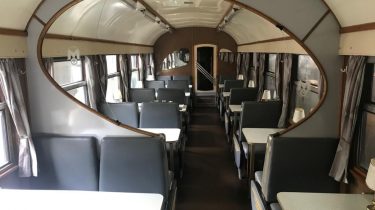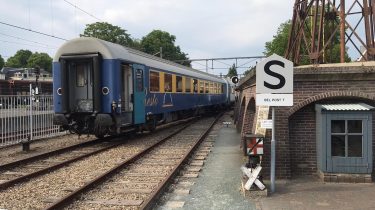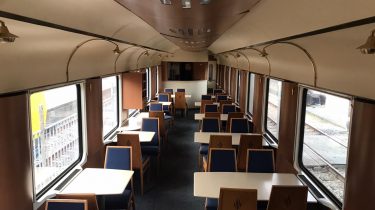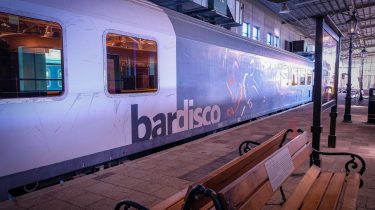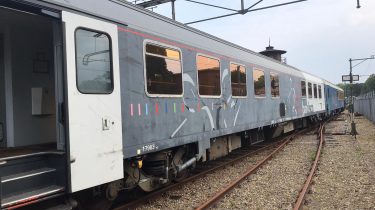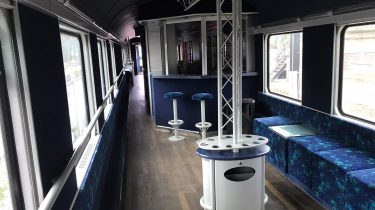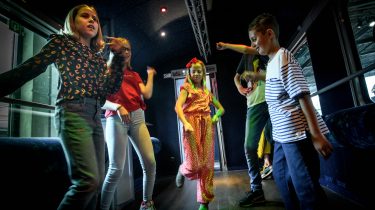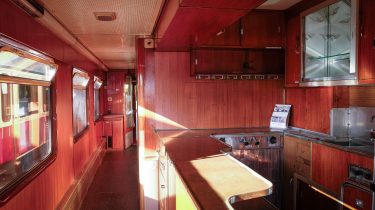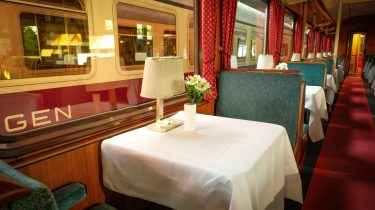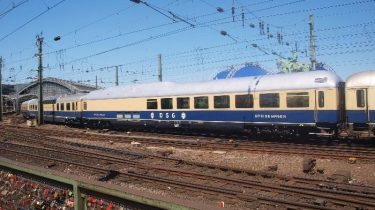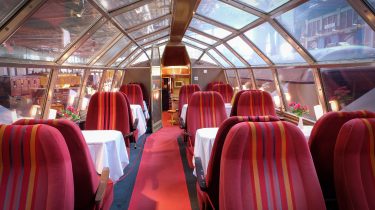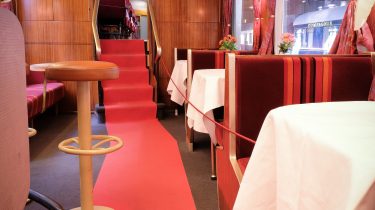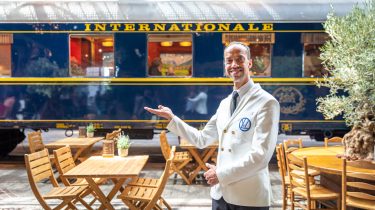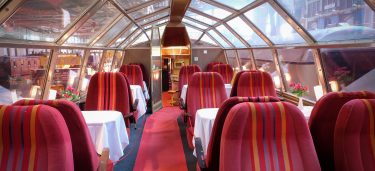
You won't want to miss these coaches
The 1911 restaurant car from the Orient Express
The Orient Express was undoubtedly the pinnacle of luxurious train travel. From 1883 until well into the twentieth century, princesses, film stars and other wealthy individuals travelled from Paris to Constantinople (today’s Istanbul) aboard the legendary train. Passengers in this restaurant car dined as if they were in the finest of restaurants, enjoying dinners with multiple courses that sometimes included truffles, caviar and other delicacies. Travelling in such cars was an unforgettable experience. This coach is the oldest restaurant car in the exhibition.
Open daily to the public when accompanied by an eduTRAINer.
The 1943 blue restaurant car owned by Wagons-Lits
Blue restaurant cars like this one were common in international trains in the twentieth century. They belonged to the Compagnie Internationale des Wagons-Lits, the ‘international sleeping-car company’. This company supplied restaurant and sleeping cars for a great many international lines. Dinner on board would consist of multiple courses, starting with soup, a main dish with meat and vegetables and a dessert.
Visitors are free to enter.
The 1951 Plan D restaurant car
The Railway Museum had this Dutch restaurant car restored especially for Toasties Truffles Trains. Thanks to donations from the charitable foundation Stichting Goede Doelen Nh1816, the Friends of the Railway Museum and the BankGiro Loterij, the coach has been returned to its original (turquoise) condition. While the car was well-suited for a quiet dinner, it also featured a small bar and coffee table for passengers who only wanted something to drink.
Visitors are free to enter.
The classy 1927 Pullman
In the late nineteenth century, American railway entrepreneur George Pullman developed luxury coaches in which passengers need never leave their seats: all their meals were brought to them instead. This coach was deployed in configurations including the stylish Étoile du Nord express trains from Amsterdam to Paris. Since 2003, this Pullman has been the crown jewel in the collection of Dutch museum line De Miljoenenlijn in South Limburg. The Railway Museum was offered the coach on loan for Toasties Truffles Trains.
Visitors are free to enter. The eduTRAINers are on hand every day from 12:30 to 14:30 to tell you all about it.
The 1965 restaurant car for the Trans Europ Express
In the late 1950s, the NS spearheaded the establishment of an international luxury-train network. The network connected ten Western European countries under the name Trans Europ Express, or TEE. This West German restaurant car was used on lines operated by TEE in the Netherlands as well. The DB Museum in Germany has loaned this coach to the Railway Museum especially for Toasties Truffles Trains.
Visitors are free to enter.
The 1961 Mitropa coach from the GDR
During the Cold War era, restaurant coaches from the state-owned company Mitropa were in service in East Germany (known as the German Democratic Republic). Yet these coaches could be found on international lines as well, including the train from East Berlin to Hoek van Holland. Passengers were served simple dishes such as soup, sauerkraut and sausage. Today, this coach belongs to the Veluwsche Stoomtrein Maatschappij museum line, which has loaned it to the Railway Museum for Toasties Truffles Trains.
Visitors are free to enter.
The modern i10 Resto from Belgium
With a little luck, you might just come across this coach from 2000 in an actual train. While the i10 makes only very rare appearances in regular service, the Belgian railway company NMBS frequently deploys this coach for trips to major music festivals. This year, thanks to the cooperation of the Belgian railway, it was able to make the journey to Toasties Truffles Trains.
Visitors are free to enter.
The 2002 Belgian mobile ‘Bar-Disco’
Holiday trains are an institution in the railway world: these special trains carry passengers on their way to the ski slopes or a sunny seaside destination. Such trains often featured a bar coach where passengers could get a head start on their holiday-making. The coach on display here in Toasties Truffles Trains is also deployed in trains carrying visitors to music festivals. The Belgian railway company NMBS has loaned it to the Railway Museum for this exhibition.
Visitors are free to enter.
The 1962 domed restaurant car from the Rheingold
The dome atop this restaurant car was the chef’s domain, while the dishwasher worked on the lower level – an arrangement that left more room for passengers. This restaurant car was built especially for the luxurious Rheingold train that operated between the Netherlands and Switzerland. Passengers on this line enjoyed carefully prepared multiple-course dinners. The coach is on loan from the German Freundeskreis Eisenbahn Köln for the Toasties Truffles Trains exhibition.
Visitors are free to enter. The eduTRAINer is on hand every day from 11:30 to 13:30 to tell you all about it.
The 1962 German panorama coach
They were already well-known in America, but revolutionary for Europe at the time: coaches with a glass roof that provided passengers with a better view of their surroundings. The German railway ordered five of these coaches made for their luxurious Rheingold train. At the front of the coach was a bar where passengers could get a drink. From the upper level, they could enjoy the view, which was definitely worth seeing – particularly when the Rheingold drove past the Rhine river. For Toasties Truffles Trains, this coach was lent to the Railway Museum by Freundeskreis Eisenbahn Köln from Cologne, Germany.
Visitors are free to enter. The eduTRAINer is on hand every day from 11:30 to 13:30 to tell you all about it.
The 1874 C218 from the Dutch national railway (Staatsspoorwegen)
Until the end of the nineteenth century, no food or drinks were served aboard trains. Passengers in cars like this one, which dates from 1874, therefore brought their own food and drinks with them. Because whether you were travelling in a third-class car like this one, or in the more expensive second or first class, no food and drinks were sold on any train at all.
Visitors are free to enter.
